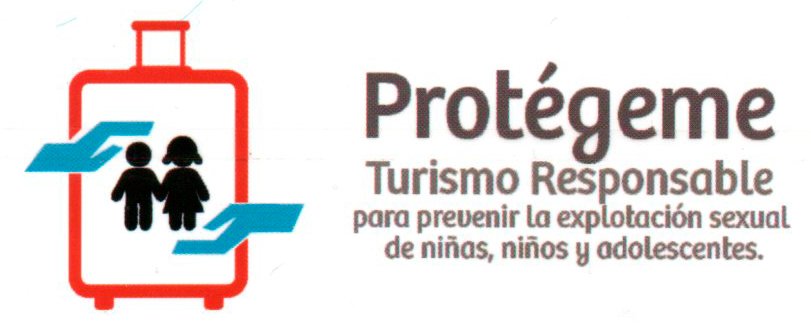Understanding the Drone Ban at Machu Picchu
The drone ban at Machu Picchu has been implemented as a measure to prioritize the preservation of this UNESCO World Heritage site. The Peruvian government, along with site authorities, established this restriction to address pressing environmental, cultural, and safety concerns associated with the use of drones in the area. By prohibiting drone flights, authorities aim to protect the delicate ecological balance and the ancient cultural heritage that Machu Picchu represents.
One significant reason for the drone ban is the potential environmental impact. The presence of drones can disturb local wildlife, particularly bird species that are critical to the region’s biodiversity. Additionally, the noise generated from these devices can disrupt the natural atmosphere of the site, affecting not only wildlife but also the experience of visitors seeking the authentic tramanquility of this ancient wonder.
Culturally, Machu Picchu is a treasure of Inca civilization, holding immense historical value. The introduction of drones threatens to undermine the site’s integrity. High-resolution aerial photography and videography, while stunning, can lead to an increase in foot traffic as people seek out specific vantage points for capturing remarkable images. This surge in visitors could result in erosion and wear-and-tear on the archaeological structures, which are already vulnerable due to their age.
Furthermore, the safety risks associated with drones cannot be overlooked. Incidents of drones malfunctioning or crashing pose hazards to tourists, park employees, and the heritage site itself. By enforcing the drone ban, the Peruvian government aims to eliminate these risks entirely, ensuring the safety of all individuals present at Machu Picchu.
As a result of this ban, travelers visiting Machu Picchu will need to adapt to new regulations regarding photography and videography. While traditional photography remains encouraged, visitors can still capture the awe-inspiring beauty of Machu Picchu without the aid of drones. Ultimately, this decision underscores the importance of maintaining the site’s integrity for future generations to appreciate and explore.
Impacts of the Ban on Travelers and Photography
The recent drone ban at Machu Picchu has significantly altered the way travelers approach their visit to this iconic site, particularly concerning photography and videography. Prior to the ban, many visitors relied on drones to capture aerial shots of the magnificent ruins and breathtaking landscapes. However, this prohibition serves a greater purpose of preserving the site’s integrity and maintaining its serene atmosphere, ultimately enhancing the travel experience for many.
With the absence of drones, visitors are now encouraged to revert to traditional photography techniques. Travelers can explore various viewpoints around Machu Picchu to obtain stunning photographs. For instance, the Inca Bridge, Sun Gate (Inti Punku), and Huayna Picchu provide unique perspectives of the ancient citadel, allowing individuals to capture the vastness and grandeur of the landscape without the interference that drones might cause.
Furthermore, the ban fosters a more grounded connection to Machu Picchu. As visitors immerse themselves in the site’s enchanting remains, they often engage more deeply with their surroundings, appreciating the intricate stonework and natural beauty. This connection is sometimes lost when using drones, as flyovers can overshadow the personal experience of exploring the ruins. Travel enthusiasts are now encouraged to develop their photography skills using smartphones or traditional cameras, emphasizing composition, lighting, and creativity to create memorable images that truly reflect their experience.
In summary, the drone ban at Machu Picchu may seem restrictive at first glance; however, it encourages travelers to find joy in alternative methods of capturing the beauty of this iconic heritage site. By adopting traditional photography techniques and exploring various viewpoints, visitors can enhance their experience while contributing to the preservation of Machu Picchu’s tranquil atmosphere.
Legal Ramifications and Penalties for Non-Compliance
The recent ban on flying drones in Machu Picchu has raised significant awareness among travelers regarding the legal implications of non-compliance. Given the site’s status as a UNESCO World Heritage Site, strict regulations have been enforced to preserve its integrity and beauty. Ignoring these regulations can lead to serious consequences, including substantial fines and the potential confiscation of any drone equipment.
Fines for unauthorized drone usage can vary widely, but travelers should be aware that these penalties can reach thousands of dollars. Authorities are equipped with the necessary tools to enforce compliance, which may include surveillance to detect unauthorized drone activity. In addition to financial repercussions, individuals caught operating drones without permission could face immediate confiscation of their equipment. This not only results in a financial loss but also encompasses a breach of trust with local authorities.
Moreover, a traveler found in violation of these regulations may be subjected to a temporary or even permanent ban from re-entering Machu Picchu. This could significantly hinder future travel plans, as the site is a pivotal destination for many seeking to experience its historical and cultural richness. It is crucial for travelers to remain informed about local laws and regulations to ensure compliance while visiting this iconic site.
To avoid unnecessary legal troubles, potential visitors to Machu Picchu should keep abreast of updates regarding drone regulations. Official tourism websites and local authorities provide essential information, which can help travelers understand their responsibilities. By adhering to these laws, travelers can enjoy Machu Picchu’s breathtaking scenery without the risk of legal issues, ensuring a memorable and hassle-free experience.
Future Developments and Advocacy for Drone Regulations
The debate surrounding drone regulations at Machu Picchu represents a complex intersection of tourism, conservation, and technological advancement. As awareness about the environmental implications of drone use grows, stakeholders are continuously discussing potential future developments regarding the current ban. It is crucial to consider the delicate balance between catering to modern travelers and preserving the cultural and natural heritage of this iconic site.
Advocacy groups play an essential role in shaping drone regulations by pushing for sustainable tourism practices that do not compromise the integrity of Machu Picchu. These organizations often collaborate with local governments, environmentalists, and the tourism sector to develop comprehensive guidelines that would protect the site while taking into account tourist interests. Their efforts are vital in ensuring that any deliberations surrounding drone usage reflect a commitment to conservation and respect for both the historical significance and the ecological surroundings of the area.
Local stakeholders, including residents and tour operators, express various perspectives on drone regulations. While some argue that drones can enhance the visitor experience through unique photography and aerial views, others emphasize the necessity of maintaining tranquility and a sense of space within such historic confines. Environmentalists frequently advocate for preserving Machu Picchu’s biodiversity and historical structures from potential disruption caused by drone activity. They argue that any proposed changes to the ban should prioritize ecological health over commercial entertainment.
As visitors to Machu Picchu, it is crucial for travelers to reflect on their responsibility in protecting this UNESCO World Heritage Site. By supporting sustainable practices and advocating for mindful tourism, individuals can contribute significantly to the preservation of this cultural gem for future generations. Engaging in conversation about responsible travel and the regulations surrounding drone use is a meaningful step toward securing a balance between exploration and conservation.




